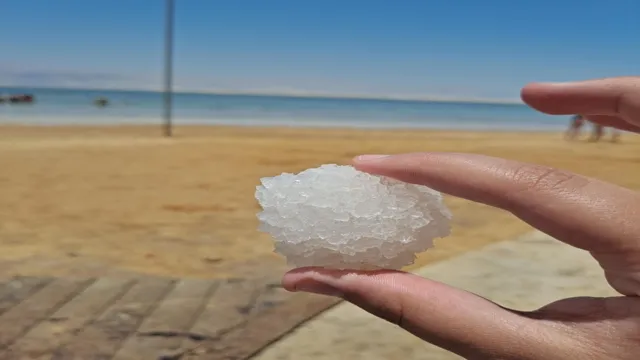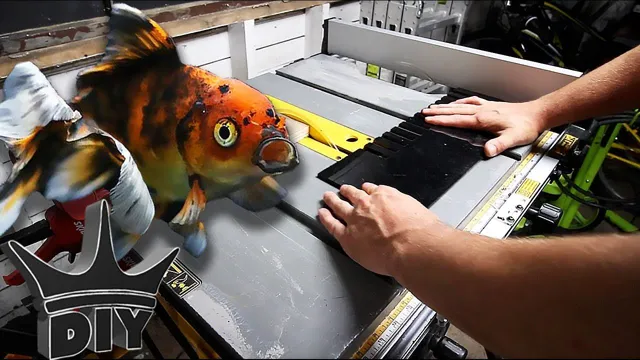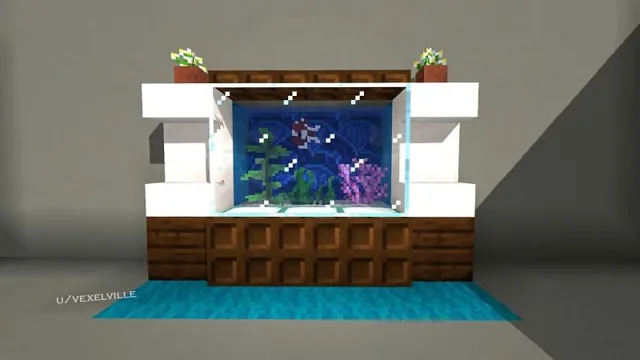If you’re a fish owner, you know the importance of maintaining a healthy underwater ecosystem for your aquatic pets. One essential element of that ecosystem is the water itself. While there are many types of water available, brackish water is a unique mixture of both fresh and saltwater that can be beneficial for certain fish species.
But how can you create this type of water? The answer lies in using aquarium salt, but there’s more to it than just adding a pinch to your tank. In this blog, we’ll dive into the ins and outs of making brackish water with aquarium salt, exploring the benefits, the process, and what fish will thrive in this environment. So grab your snorkel and let’s get started!
What is Brackish Water?
Are you looking to create a brackish water environment in your aquarium? Brackish water is a mix between freshwater and saltwater, typically found in estuaries or near river mouths where fresh water meets the ocean. To make brackish water for your aquarium, you can use aquarium salt, which is specifically designed for aquatic animals. Start by filling a bucket with the amount of water needed for your tank, then gradually add the salt while continuously stirring until it dissolves.
The amount of salt needed will depend on the type of animals and plants you plan to keep in your tank, so be sure to research appropriate levels. Keep in mind that the process of creating brackish water is a delicate balance, and proper maintenance and monitoring of your tank’s conditions is necessary to ensure the health and well-being of your aquatic pets.
Definition
Brackish water is a type of water that contains a mixture of both freshwater and saltwater. It typically falls between the salinity levels of freshwater and seawater, ranging from 0.5 to 30 parts per thousand (ppt).
This type of water is commonly found in estuaries, where rivers meet the ocean, and in coastal aquifers. Brackish water can also be found in other areas such as salt marshes, mangrove swamps, and lagoons. Due to its unique composition, brackish water is not suitable for drinking or irrigation without undergoing extensive treatment.
In some cases, however, brackish water can be used for aquaculture and as a source of geothermal energy.

Characteristics of Brackish Water
Brackish water is sometimes described as a mix of fresh and saltwater. It is a unique type of water that is often found in estuaries or coastal areas where rivers meet the ocean. Brackish water typically has a salinity level between 0.
5 and 30 parts per thousand (ppt), which is higher than freshwater but lower than seawater. One of the defining characteristics of brackish water is its variable salinity levels, which can fluctuate based on factors like tides, rainfall, and evaporation. Because of its intermediate salinity range, brackish water can be a challenging environment for many types of aquatic plants and animals to thrive.
However, some species, like mangroves, have adapted to the harsh conditions of brackish water and are able to grow and thrive in this unique ecosystem. Understanding the properties of brackish water is important for scientists and engineers who work with coastal ecosystems and water management.
Why Use Aquarium Salt?
If you’re looking to create a brackish water environment in your aquarium, then aquarium salt is definitely something you’ll want to consider. It’s a great way to mimic the natural environment of many fish and plants that are native to brackish water. Aquarium salt contains a mix of different minerals and salts that help to improve the health and well-being of your fish, while also helping to prevent disease.
It’s quite easy to use, and all you need to do is add a small amount of salt to your aquarium water according to the instructions on the packaging. Once you’ve done this, you’ll need to allow the salt to dissolve completely before adding any fish or other aquatic creatures to the tank. Keep in mind that it’s important to follow the instructions carefully and not to add too much salt, as this can be harmful to your fish.
By using aquarium salt in your brackish water environment, you can create a healthy and natural habitat for your aquatic pets that they will thrive in. (See Also: How to Filter Aquarium Water: Tips for Clear and Healthy Water)
Benefits of Using Aquarium Salt
Aquarium Salt Adding aquarium salt to your fish tank can provide many benefits, including improving gill function, promoting healthy fish skin, and regulating osmotic balance. Aquarium salt can also help reduce stress in fish, especially during transportation or after they are introduced to a new environment. Additionally, aquarium salt can aid in the prevention and treatment of certain bacterial and parasitic infections in fish.
However, it is important to note that not all fish species can tolerate higher levels of salt, so it’s essential to research the specific needs of your fish before adding salt to their tank. Overall, using aquarium salt can be beneficial for promoting a healthy and stress-free environment for your underwater pets.
Types of Aquarium Salt
Aquarium Salt Aquarium salt is a popular additive among fish owners that can help to promote the health and well-being of your aquatic pets. One of the main reasons to use aquarium salt is that it can help to reduce stress and disease in fish by providing a stable and balanced environment. There are different types of aquarium salt available, including iodized and non-iodized varieties.
Iodized salt can be beneficial for fish that are prone to thyroid imbalances, while non-iodized salt is suitable for most fish species. It is important to choose the right type of aquarium salt for your specific needs and to follow the recommended dosage instructions carefully. Incorporating aquarium salt into your regular fish care routine can help to promote a healthy and thriving aquatic environment for your fish to call home.
How to Make Brackish Water with Aquarium Salt
If you’re interested in keeping brackish water species in your aquarium, you’ll need to learn how to make brackish water with aquarium salt. First, it’s important to note that brackish water falls somewhere between freshwater and saltwater, with a salinity level of around 005 to
020 specific gravity. To make this type of water, you’ll need aquarium salt mix, which can be found at most pet stores or online retailers. Start by filling your aquarium with fresh water, and then use a hydrometer to measure the specific gravity.
From there, follow the instructions on the aquarium salt mix container to add the appropriate amount of salt to reach the desired specific gravity. It’s important to add the salt slowly and mix thoroughly, as too much salt added too quickly can shock your fish. Be sure to also test the water pH and adjust if necessary, as well as monitor the salinity level regularly to ensure it remains consistent.
With a bit of patience and attention to detail, you can successfully create a healthy and happy environment for your brackish water species.
Step-by-Step Guide
If you want to create a brackish water environment in your aquarium, you’ll need to start by adding aquarium salt. It may seem daunting, but with a little bit of guidance, you can create the perfect environment for your brackish water species. Here’s a step-by-step guide on how to make brackish water with aquarium salt.
First, fill your aquarium with salt-free water. Use a hydrometer to test the salinity level. The ideal salinity for most brackish water species is between
005 and 020 specific gravity. Next, add aquarium salt to the water.
Carefully follow the instructions on the packaging, and add the salt a little at a time. Stir the water to dissolve the salt and recheck the salinity level with your hydrometer until you reach your desired salinity level. Remember that it’s important to add the salt gradually and slowly.
This allows the salt to dissolve properly so that it’s evenly distributed throughout the water. If you add too much salt at once, it can cause a shock to your aquarium species and lead to health problems or even death. Once the salt has completely dissolved, it’s important to let the water circulate for a few hours. (See Also: How to Clean My Aquarium Ornaments: Easy and Effective Techniques)
Use a powerhead or airstone to ensure good water flow and oxygenation. This helps to create a stable environment that’s suitable for your brackish water species. Finally, recheck the salinity level with your hydrometer and adjust if needed.
Measuring Salt Concentration
Aquarium Salt If you want to make brackish water in your aquarium, using aquarium salt is an easy and effective way to raise the salinity level. The first step is to measure the current salt concentration in your tank using a hydrometer. This will give you an accurate reading of the salinity level.
Once you know the current level, you can then add aquarium salt to increase it to the desired level. It’s essential not to add too much salt all at once, as sudden changes in salinity can be harmful to your fish. Instead, follow the recommended dosage and gradually increase the salt level over a few days.
Remember to monitor the salt concentration regularly and adjust as needed. With the proper salt levels, you can create the optimal environment for certain species of fish and promote better health and growth.
Maintaining Brackish Water Aquariums
When it comes to maintaining brackish water aquariums, aquarium salt is a must-have ingredient for ensuring the proper salinity levels. Making brackish water is actually quite simple – just add aquarium salt to freshwater until the desired salinity level is reached. However, it’s important to remember to not overdo it with the salt, as this can harm your fish and other aquatic creatures.
To maintain the ideal salinity, you should perform regular water tests and adjust the amount of salt as needed. In addition to salinity, it’s also important to maintain proper water parameters such as pH, temperature, and ammonia levels. With these factors in mind, you can enjoy a thriving and healthy brackish water aquarium.
Testing Water Parameters
Maintaining a brackish water aquarium requires a lot of attention and effort, but it can be rewarding if you have the right tools and knowledge. One crucial aspect of maintaining a healthy brackish water aquarium is testing the water parameters regularly. Brackish water is a delicate balance between freshwater and saltwater, so it’s essential to ensure that your aquarium’s salinity, pH, and other parameters are within the optimal range.
You can use test kits to check the water quality, and make any necessary adjustments to keep the chemistry balanced. It’s crucial to keep track of your test results over time to identify any trends, allowing you to adjust accordingly before your fish or other inhabitants suffer any consequences. Testing water parameters is a simple but powerful tool for maintaining a healthy brackish aquarium.
Water Change Schedule
Maintaining a brackish water aquarium can be a challenge, but with the right water change schedule, you can keep your aquatic pets healthy and happy. The ideal schedule for changing the water in a brackish aquarium is every two weeks. However, this can vary depending on the size of your tank and the number of fish or other creatures you have.
When changing the water, you should aim to remove about 10-20% of the total volume of your aquarium, as brackish water can be sensitive to sudden fluctuations in salinity. When performing a water change, it’s essential to use the right type of water. Brackish water requires a combination of fresh and saltwater to maintain the proper salinity levels, so you’ll need to mix a specific amount of each before adding it to your tank.
When mixing your water, it’s crucial to use high-quality salts and a reliable pH buffer to ensure that your aquarium stays healthy. Remember that maintaining a brackish water aquarium requires specialized knowledge and attention to detail. Make sure to monitor your aquarium regularly, check the salinity levels, and perform regular water changes to keep your aquatic pets thriving.
By following a consistent water change schedule and staying on top of your water parameters, you can ensure that your brackish aquarium remains a beautiful and healthy aquatic oasis. (See Also: How to Build In a 3 Canister Aquarium Filter: The Ultimate Guide)
Conclusion
In conclusion, creating brackish water with aquarium salt is a straightforward process that requires a little bit of chemistry and a dash of creativity. Think of it as a delicate dance between your saltwater and freshwater worlds – too much salt and your fish will be unhappy, too little and they will long for the open sea. But with attention to detail and a healthy sense of experimentation, you can create a brackish environment that will keep your fish happy and healthy.
So go forth, intrepid aquarists, and make some salty magic happen in your tanks!”
FAQs
What is brackish water?
Brackish water is a mix of saltwater and freshwater, typically found in estuaries and mangrove swamps.
How do I make brackish water for my aquarium?
To make brackish water, you will need to add aquarium salt to freshwater until it reaches a specific gravity of 1.005-1.015.
What type of aquarium salt should I use?
You should use a specialized aquarium salt that is designed for creating brackish water, as regular table salt can harm your fish.
Can I add too much salt to my brackish aquarium?
Yes, adding too much salt can be harmful to your fish and other aquatic animals. It’s important to carefully measure and add the salt, and do frequent water tests to ensure proper salinity levels.
How often should I perform water changes in a brackish aquarium?
You should perform partial water changes every 2-3 weeks to maintain proper salinity levels and keep the water clean.
Which types of fish and invertebrates are suitable for a brackish aquarium?
The types of fish and invertebrates that can live in a brackish aquarium include mollies, archerfish, gobies, and fiddler crabs.
Can I convert a freshwater aquarium to a brackish aquarium?
Yes, you can convert a freshwater aquarium to a brackish aquarium, but it’s important to slowly acclimate your fish to the increased salinity levels to avoid stress and potential health issues.







